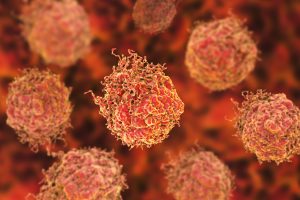Scientists at the University of East Anglia published a paper “The architecture of clonal expansions in morphologically normal tissue from cancerous and non-cancerous prostates” in Molecular Oncology that describes how prostate cancer may start to develop. The team’s research reveals that the prostate as a whole, including cells that appear normal, is different in men with prostate cancer.
The study suggests that tissue cells throughout the entire prostate are primed and ready to develop prostate cancer. This means that it may be better to treat the whole prostate rather than only the areas in the prostate that have cancer, according to the researchers, who hope their work could help scientists better understand the causes of prostate cancer, and even prevent it altogether.

“Single nucleotide variants (P = 7.0 × 10–03, Wilcoxon rank sum test) and small insertions and deletions (indels, P = 8.7 × 10–06) were significantly higher in morphologically normal samples, including BPH, from men with prostate cancer compared to those without. The presence of subclonal expansions under selective pressure, supported by a high level of mutations, were significantly associated with samples from men with prostate cancer (P = 0.035, Fisher exact test). The clonal cell fraction of normal clones was always higher than the proportion of the prostate estimated as epithelial (P = 5.94 × 10–05, paired Wilcoxon signed rank test) which, along with analysis of primary fibroblasts prepared from BPH specimens, suggests a stromal origin.
“Constructed phylogenies revealed lineages associated with benign tissue that were completely distinct from adjacent tumor clones, but a common lineage between BPH and non-BPH morphologically normal tissues was often observed. Compared to tumors, normal samples have significantly less single nucleotide variants (P = 3.72 × 10–09, paired Wilcoxon signed rank test), have very few rearrangements and a complete lack of copy number alterations.
“Cells within regions of morphologically normal tissue (both BPH and non-BPH) can expand under selective pressure by mechanisms that are distinct from those occurring in adjacent cancer, but that are allied to the presence of cancer. Expansions, which are probably stromal in origin, are characterized by lack of recurrent driver mutations, by almost complete absence of structural variants/copy number alterations, and mutational processes similar to malignant tissue.
“Our findings have implications for treatment (focal therapy) and early detection approaches.”
Most common type of cancer in men
“Prostate cancer is the most common cancer in men and kills one man every 45 minutes in the U.K.,” says lead researcher Daniel Brewer, PhD, from UEA’s Norwich Medical School. “Often, when men are diagnosed with prostate cancer, groups of cancer cells can be found in more than one location within the prostate.
“We wanted to know if this is because of changes in ‘normal’ prostate cells throughout the prostate.”
According to Brewer, the samples his team studied included tissue that comes from the cancer and tissue from elsewhere in the prostate, which looks normal down the microscope.
“This produces a massive amount of data and by applying a large amount of computer power we can determine the differences that have occurred in the DNA, giving us insight into how the cancer grows,” he explains. “We found that ‘normal’ prostate cells in men who had prostate cancer had more mutations than ‘normal’ prostate cells from men without prostate cancer. Based on the genetics of the samples analyzed, we created maps to understand where the different mutations occurred. And we showed that in most men, the mutations in normal cells are different to mutations in cancer cells.”
The “normal” prostate cells in men who have prostate cancer appear to provide a beneficial environment for prostate cancer cells to develop and grow, continues Brewer.
“In other words, the whole prostate is primed and ready to develop prostate cancer driven by an, as yet unknown, biological process,” he explains. “This work has improved our knowledge of how prostate cancer first starts to develop and might one day give us clues as to how to prevent or treat it. And it shows that it may be better to treat the whole prostate rather than only the areas in the prostate that have cancer.”
The new study shows for the first time how normal cells in the prostate can facilitate the growth and spread of prostate cancer, notes Hayley Luxton, senior research impact manager at Prostate Cancer UK.
“The researchers found that normal prostate cells in men with prostate cancer have specific genetic changes that make them act like a rich compost, providing the perfect environment for prostate cancer cells to grow and develop,” she says. “These findings give us important new insights into the early development of prostate cancer, which might one day give us clues as to how to prevent it.”
To read other GEN articles on prostate cancer see “Prostate Cancer Treatment May Rewire Tumor Engine, Potentially Increasing Aggressiveness,” “Using Iron to Help Kill Resistant Prostate Cancer Cells,” and “Researchers Uncover Mechanism by Which Prostate Cancer Becomes Resistant.”






